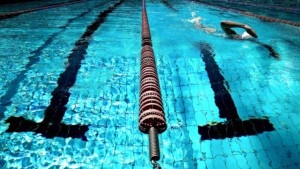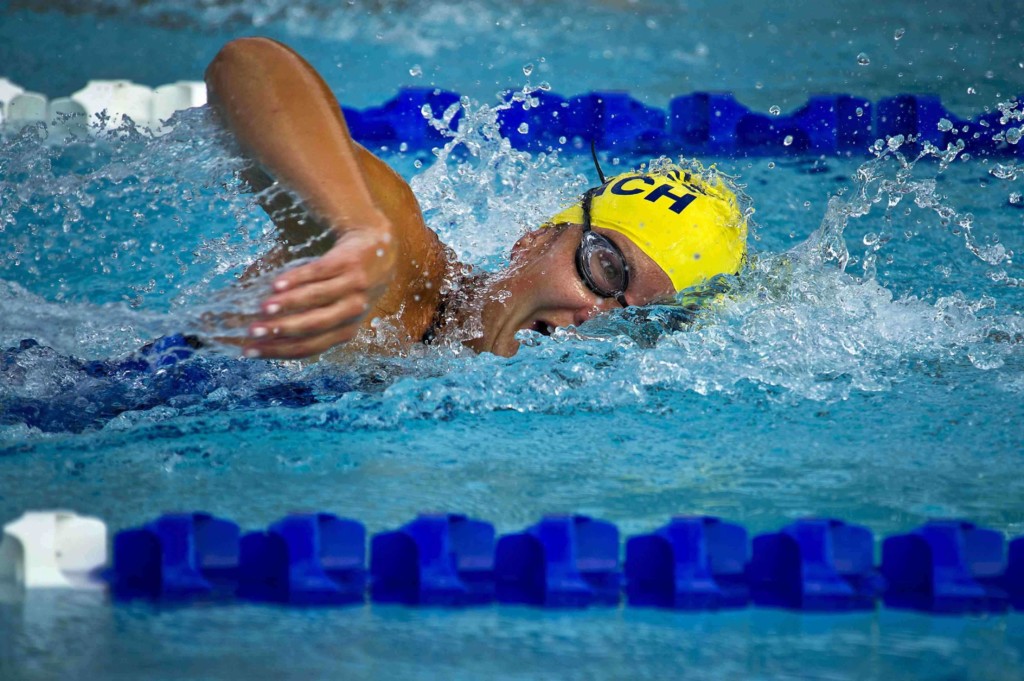By Sage Hopkins
Head Coach – PSE PRO Swim & San Jose State University
**NEVER do long underwater swimming or underwater breath holds, and NEVER swim unsupervised**
Over the past year, I’ve been getting more and more questions regarding our integration of breath work with the competitive swimmers I coach.
The focus of this post will be on the ways we are integrating breath work both in and outside of practice … for those interested in learning more of the science/physiology behind what we are doing, I’d encourage you to reference Brian MacKenzie and Rob Wilson’s various articles and podcasts on the subject. I’ve broken our article down into four sections: pre-workout/pre-competition, post-workout/post-competition, during a workout, and evening/prior to bed.
 While we are strong advocates of nasal breathing while workout out/training, obviously nasal breathing isn’t practical while swimming (it can be utilized while kicking with a board). Our primary use of nasal breathing will be while on the wall during rest periods. During light aerobic swimming, this won’t be too much of a challenge for most of you. What we look to develop is how quickly you can initiate nasal breathing when you are “redlining.” Improvements in this area will indicate a few things … improved efficiency/effectiveness with nasal breathing, an improved tolerance to CO2 levels, as well as a psychological/emotional adaptation in terms of your ability to maintain composure under stress.
While we are strong advocates of nasal breathing while workout out/training, obviously nasal breathing isn’t practical while swimming (it can be utilized while kicking with a board). Our primary use of nasal breathing will be while on the wall during rest periods. During light aerobic swimming, this won’t be too much of a challenge for most of you. What we look to develop is how quickly you can initiate nasal breathing when you are “redlining.” Improvements in this area will indicate a few things … improved efficiency/effectiveness with nasal breathing, an improved tolerance to CO2 levels, as well as a psychological/emotional adaptation in terms of your ability to maintain composure under stress.
Why do we want to nasal breathe during rest intervals?
1) You will recover quicker and be able to have a higher work output on subsequent repeats/sets.
2) You will improve your body’s ability to tolerate CO2
3) Psychological/emotional adaptation in terms of your ability to maintain composure under stress
4) Engage diaphragm
Pre-Workout/Pre-Meet warm-up
Immediately prior to starting warm-up, the team does 10-12 rounds of cadence (1-1-2-1).
This should help “warm-up” the respiratory system and also be mildly “up-regulating.”
Post-Workout/Meet
We’ve greatly cut-down the amount of swimming in our warm downs and have replaced the swimming with a 1-1-1-1 breathing protocol.
A post-meet warm down used to typically be in the 800-1200 yard range (approx. 15-20 minutes). We now typically employ something along the lines of 3 rounds of:
3-4×50 easy on a :40 interval and 4 rounds of the 1-1-1-1 protocol.
Post workout we will typically do 4-10 minutes of the protocol.
As I mentioned earlier, we have cut about 1/3-1/2 of our typical warm down volume, as the swimmers feel completely recovered.
Within Training Sets and at the conclusion of training sets:
One of our favorite training sets is “Bolles 50’s” …
8×50 with each being attacked as if it is the only swim of the set (we don’t want people “saving up” or looking to “hold an average” … done right the swimmers should not be able to sustain the same speed from #1-#8 … true distance swimmers can be an exception).
The set starts with a lot of rest (the first 4×50 are on a 2:00 interval, so everyone is getting around 1:30 rest; the next 2×50 are on a 1:30 interval and the final 2×50 are on a :50 interval).
Here is how we do the set now:
After the first 4×50, immediately upon finishing the 50 do two rounds of :20 nasal breathing + exhale hold.
After #5 and #6 (which are now on a 1:30 interval), we go one round of :30 nasal + inhale hold.
After #8 we go 3 rounds of :30 nasal + exhale hold and then 3 rounds of :30 nasal plus inhale hold.
After the 6th round of breathing the swimmers will generally feel 100% recovered with no need for “easy swimming.”
Examples incorporating breathing protocols into a set:
3 rounds of 3×100 as follows:
3×100 @ 1:30 best average
Immediately upon finishing the 3rd 100 transition to nasal-only breathing as quickly as possible, and then nasal breathe for 1:00 and then begin the second set of 3×100.
6×300 for time.
Upon finishing each 300 transition to nasal-only breathing as quickly as possible, and then nasal breathe for 2:00 and then begin next 300.
20×25 fast.
Upon finishing each 25 transition to nasal-only breathing as quickly as possible, once you can take 5 consecutive nasal only breaths start the next 25
Examples incorporating inhale holds and exhale holds:
Our most standard breathing protocols during long rest periods or at the end of sets involve incorporating rounds of :20-:30 of nasal breathing with “inhale” and/or “exhale” holds.
3 rounds of 3×100 as follows:
3×100 @ 1:30 best average
Immediately upon finishing the 3rd 100 transition to nasal-only breathing as quickly as possible, and then go three rounds of (:30 nasal breathing + inhale or exhale hold)
6×300 for time.
:30 rest after the odd # 300’s, after the even # 300’s transition to nasal-only breathing as quickly as possible, and then go three rounds of (:30 nasal breathing + inhale or exhale hold)
Take another :10-:15 rest and begin the next 300.
20×25 fast.
Upon finishing each 25 transition to nasal-only breathing as quickly as possible, once you can take 5 consecutive nasal only breaths start the next 25. At conclusion of set go three rounds of (:30 nasal breathing + inhale or exhale hold)
The final breathing protocol we employ is an Apnea protocol (1-3-2-0 or 1-4-2-0). This is done in the evening prior to bed and has been a huge help in terms of recovery, quality of sleep, as well as CO2 tolerance.
Feel free to reach out via Instagram or Twitter with any questions!


No Comments